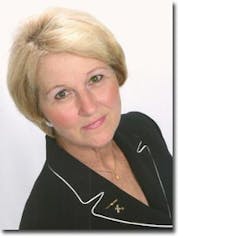When early pilots like Charles Lindbergh made a forced landing, “ground support” was where you found it.
Managing editor Lisa Haddican had asked me what was considered “ground support” before WWI, or during the Golden Age of aviation when air mail pilots and barnstormers landed in open fields.
That quickly raised other questions about terminology we use every day. Have you ever wondered where the term “hangar” originated? Who tagged the term “FBO” (fixed base operator) and which FBO in the U.S. claims to have been the “first”?
Aviation historians are eager to turn a question into a research quest. This became mine.
The earliest words used to describe all things aviation were often rooted in the French language, and/or originated in equestrian and nautical terminology. An “aerodrome” became an “airport,” a “mechanician” became a “mechanic,” and an “aviator” is now commonly referred to as a “pilot.” “Sheds” became “hangars.” The term “hangar” is derived from the French word meaning animal hay shed.
In 1910, most Americans had not yet seen an aeroplane, but entrepreneur Alfred J. Moisant and his famous aviator brother, John, saw big business in the future of aviation. They banked $250,000 on a grand scheme to sell “air-mindedness” to the general public. Far ahead of their time, the Moisants envisioned what we currently recognize as an FBO.
Alfred purchased 1600 acres of Long Island’s flat Hempstead Plains near Garden City (Mineola), hoping to attract investors. It included a flight school, an aerodrome for exhibitions and air meets, rented covered sheds for aircraft (out-houses included), fuel sales, mechanical repairs, and a manufacturing plant for their monoplanes. (A proposed restaurant overlooking the airfield never materialized.)
On Dec. 31, 1910, John fell to his death attempting to break an altitude record near New Orleans, La. (The current airport designator “MSY” originates from its first name, “Moisant Field”). Beleaguered by financial and legal losses, Alfred finally dissolved his business and dropped out of the aviation game entirely by 1913.
I still don’t know who first used the term “FBO,” nor do I know who claims to be the “first” in the U.S. Until one of my colleagues unearths a better answer, my money is on Alfred Moisant as the first to own and operate a fixed based operation in the United States.
In my quest to answer Lisa’s challenge, I discovered that in the years prior to WWII, children, farmers and farm animals were depended upon to be ground support wherever an aviator landed away from a designated flying field. Their equipment often consisted of tractors, wheel barrows, horses, mules and bicycle tire pumps. The recent “Miracle on the Hudson” is a reminder that through the last century of progress in aviation, pilots still depend upon “ground support” where they find it.
The roots of professional ground support began in the shifting sands of Kitty Hawk when local lifeguards helped Orville and Wilbur Wright test their gliders. I look forward to digging into the past, exposing the legacy that is Uncovered Ground.
Giacinta Bradley Koontz is an aviation historian, former museum director and archaeologist. She is the 2008 recipient of the DAR History Medal and nationally recognized expert on the life of Harriet Quimby, America’s first licensed female pilot (1911). Learn more about her various aviation history projects at: www.harrietquimby.org.





